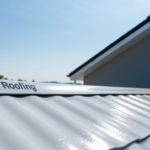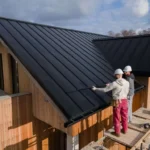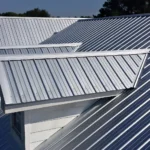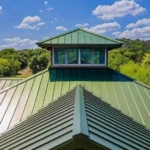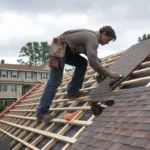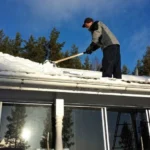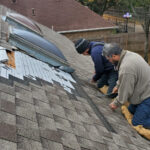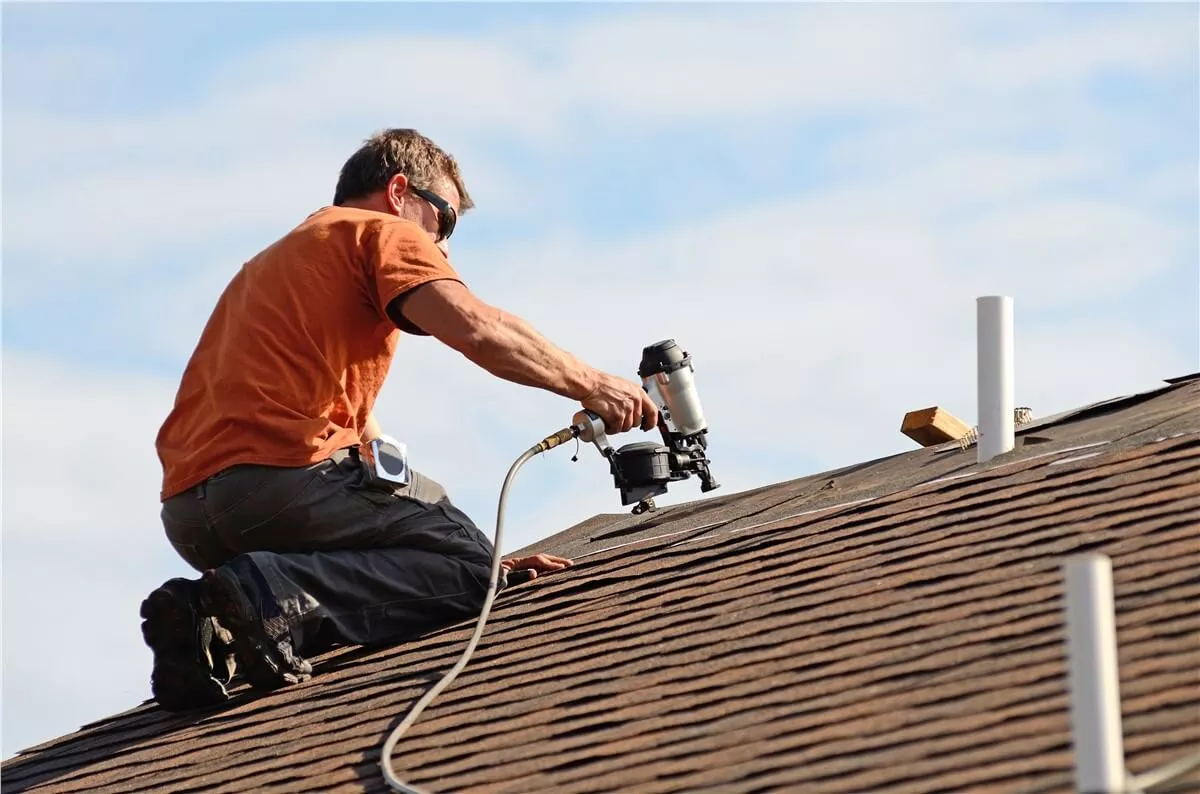If you’re a homeowner looking for a roofing option that combines durability, timeless beauty, and long-term value, slate roofing is a top contender. Known for its natural elegance and exceptional lifespan, slate roofs can transform the look of any home while offering unmatched protection. This guide will walk you through everything you need to know about choosing, installing, and maintaining a slate roof.
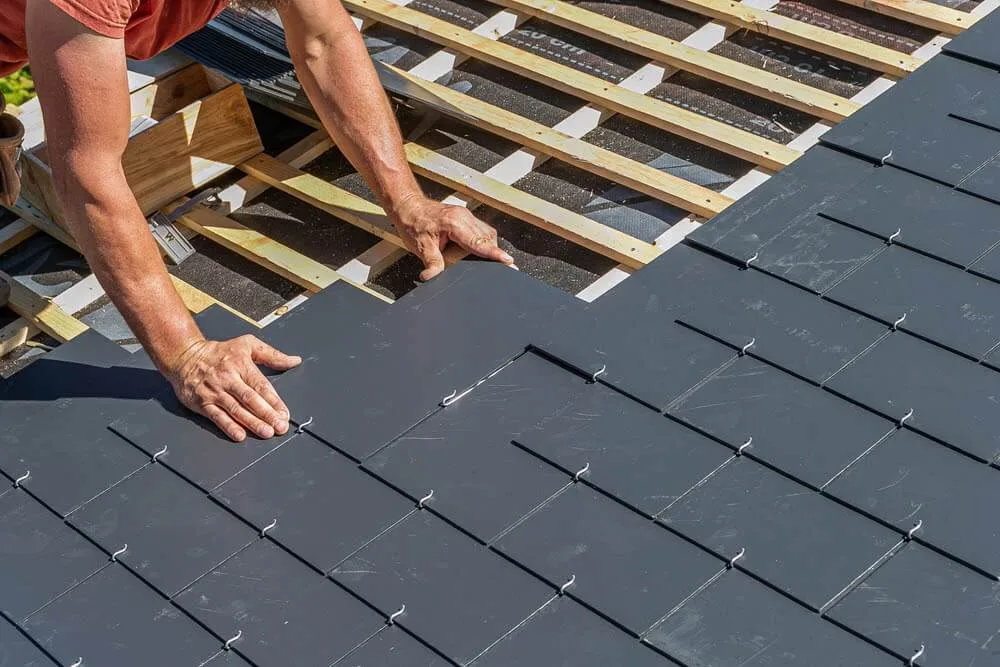
Content
What Is Slate Roofing?
Slate roofing is a premium roofing solution made from natural stone or synthetic materials designed to mimic the beauty of stone. Unlike common asphalt shingles, slate offers both aesthetic charm and incredible durability. Understanding the types and lifespan of slate roofing is crucial for making an informed decision.
Natural vs. Synthetic Slate
Natural slate roofing is cut directly from stone quarries, providing unmatched authenticity, unique textures, and long-lasting performance. It is heavy, which means your roof structure must support the additional weight. On the other hand, synthetic slate roofing is made from recycled materials or polymer composites, offering a lightweight alternative that’s easier to install and often more cost-effective. Both options are eco-friendly roofing materials, but natural slate is entirely recyclable, making it a sustainable choice for environmentally conscious homeowners.
Typical Lifespan of a Slate Roof
One of the most compelling reasons to choose slate roofing is its lifespan. A natural slate roof can last 75 to 200 years when properly installed and maintained. Synthetic slate roofs typically last 50 to 75 years, which is still significantly longer than asphalt shingles. Regular inspections and proper slate roof maintenance can extend the life of any slate roof, preserving its beauty and functionality.
Benefits of Slate Roofing
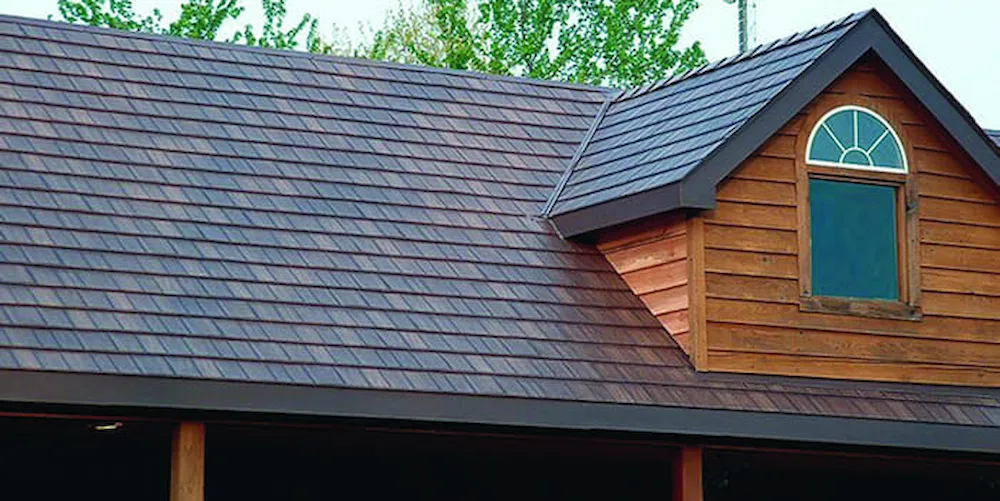
Durability and Strength
Slate roofs are incredibly durable and resistant to fire, wind, and extreme weather conditions. Unlike other roofing materials, slate does not rot or attract pests. Its unmatched roof durability makes it a wise long-term investment for homeowners seeking reliability and protection.
Aesthetic Appeal and Styles
The visual appeal of a slate roof is hard to beat. Available in a variety of colors, textures, and patterns, slate can complement any architectural style, from historic homes to modern residences. This versatility also enhances your home’s value, making luxury roofing options more accessible. Compared to asphalt, slate vs asphalt roofing offers a more elegant and enduring finish that never goes out of style.
Cost-Effectiveness Over Time
While the initial slate roofing cost may be higher than alternatives, its longevity and minimal maintenance make it cost-effective in the long run. Homeowners often find that investing in a quality slate roof reduces the frequency of replacements and repairs, saving money over decades.
Low Maintenance and Eco-Friendliness
Slate roofs require minimal upkeep. Occasional inspections and minor repairs are usually sufficient to maintain their integrity. Moreover, both natural and synthetic slates are eco-friendly roofing materials, often made from recycled or sustainable resources. Choosing a slate roof is not only practical but also environmentally responsible.
How to Choose the Right Slate Roof
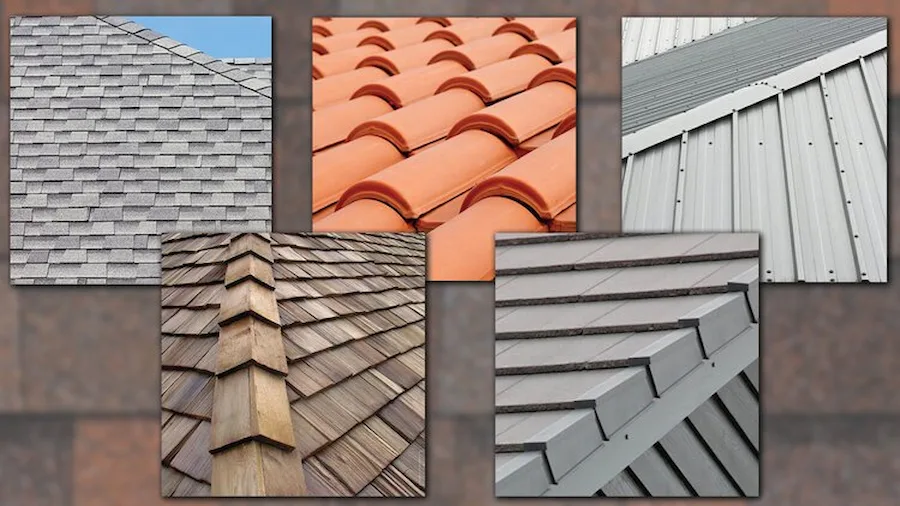
Evaluating Your Home’s Structure
Before selecting a slate roof, evaluate your home’s structure. Natural slate can be heavy, so the roof framing must support the load. A slate roof installation by a certified contractor ensures your home can handle the weight safely.
Selecting the Best Type of Slate
Choosing between natural and synthetic slate depends on your budget, aesthetic preference, and structural capacity. Consider thickness, texture, and color options. Natural slate roofing offers unmatched authenticity, while synthetic slate roofing provides a lighter, often more affordable alternative without compromising appearance.
Budgeting and Cost Considerations
When budgeting for a slate roof, factor in both the slate roofing cost and long-term maintenance. Natural slate may cost more upfront, but its durability often outweighs the expense. Synthetic slate is cost-effective and requires fewer structural adjustments, making it a practical choice for many homeowners.
Slate Roof Maintenance Tips
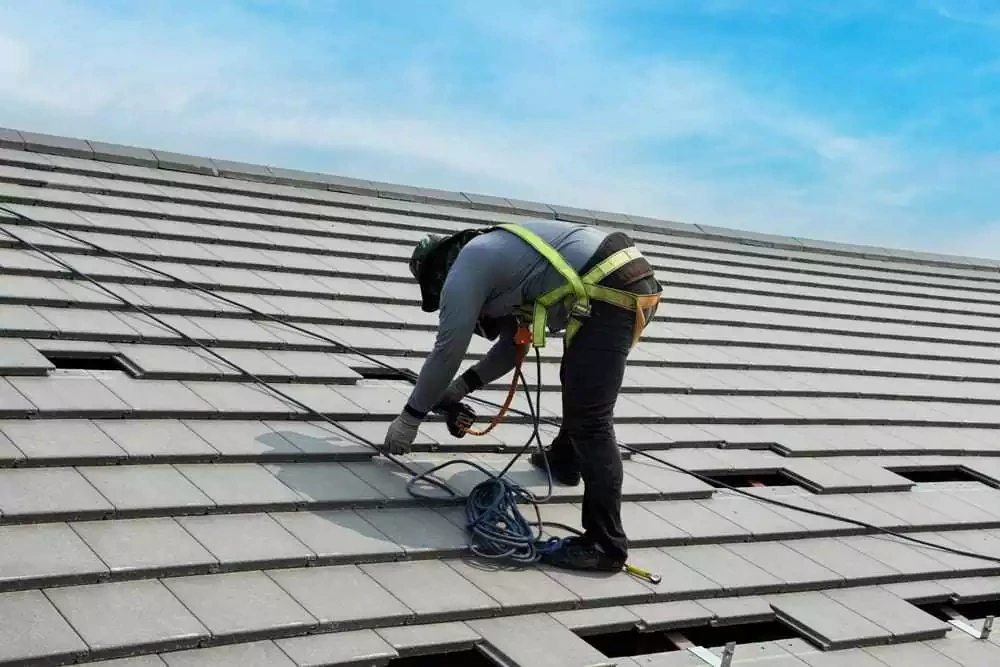
Regular Inspections
Routine inspections are essential to preserving the longevity of a slate roof. Look for cracks, loose tiles, or signs of water damage. Addressing minor issues promptly can prevent expensive slate roof repairs in the future.
Cleaning and Debris Removal
Keep your roof free from leaves, branches, and moss to avoid water retention and potential damage. Use gentle cleaning methods to protect the integrity of slate roof tiles.
Hiring Professional Help
For installation, repairs, or complex maintenance, it’s best to hire professionals experienced with slate roof installation. Attempting repairs yourself can lead to broken tiles or structural problems. Licensed contractors ensure a safe, durable, and aesthetically pleasing result.
Common Problems and Solutions
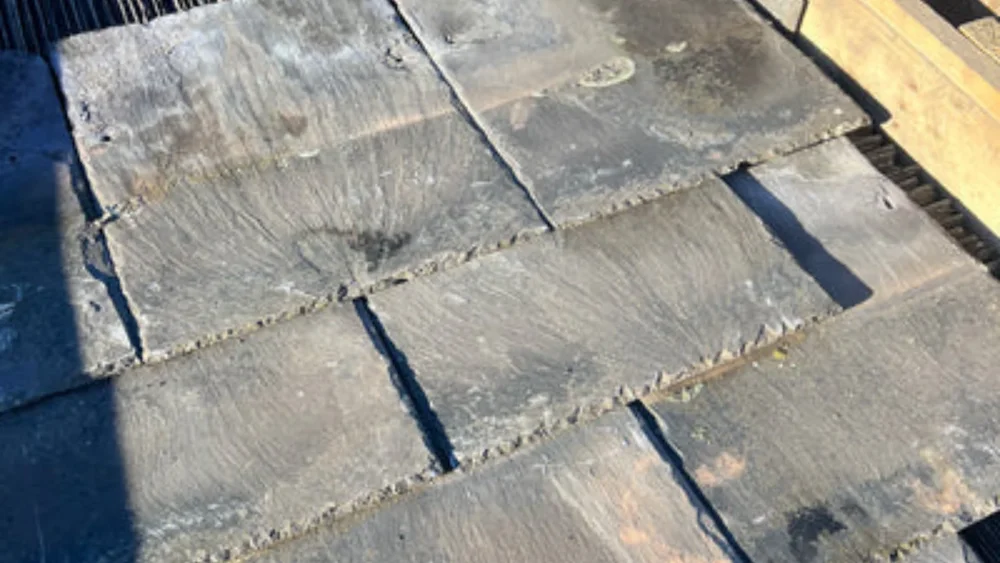
Cracked or Broken Slate Tiles
Over time, individual tiles may crack due to weather events or structural movement. Slate roof repairs are typically straightforward; a professional can replace damaged tiles without disturbing the rest of the roof.
Water Leakage and Flashing Issues
Improperly installed or aging flashing can lead to water leaks. Regular maintenance and inspections prevent water damage and extend the roof’s lifespan. Proper attention to slate roof maintenance helps homeowners avoid costly repairs.
Real-Life Case Study: The Thompson Family Home
The Thompson family, residing in Portland, Oregon, decided to upgrade their aging asphalt roof to natural slate roofing. Their home’s original structure required reinforcement due to the heavier weight of natural slate. The family chose slate for its long lifespan, aesthetic appeal, and minimal maintenance.
After a professional slate roof installation, their home experienced immediate benefits. The roof not only enhanced curb appeal but also reduced energy costs thanks to its thermal properties. Over five years, routine inspections and minor maintenance kept the roof in pristine condition. This case study highlights how a thoughtful investment in slate roofing can provide long-term value and peace of mind for homeowners.
Conclusion
Investing in a slate roof is a decision that combines beauty, durability, and long-term savings. Whether you choose natural slate roofing for authenticity or synthetic slate roofing for cost-effectiveness and lighter weight, proper selection, installation, and maintenance are key. By following the tips in this guide—including regular inspections, professional installation, and timely repairs—you can enjoy the benefits of slate roofing for decades.
FAQs
What is a drawback of a slate roof?
Slate roofs are heavy and require reinforced structures, making installation more complex and costly.
Is slate an expensive roof?
Yes, natural slate has a high upfront cost, though its long lifespan often offsets the initial expense.
Is slate good for roofing?
Absolutely—slate is durable, fire-resistant, and visually appealing, making it a premium roofing choice.
Does a slate roof increase home value?
Yes, slate roofs enhance curb appeal and longevity, which can boost a home’s resale value.

Elena Mohr is a dedicated home blogger who has been blogging for over six years. She covers everything home related. Elena also loves writing posts about her travels to Europe with her husband and two children.


